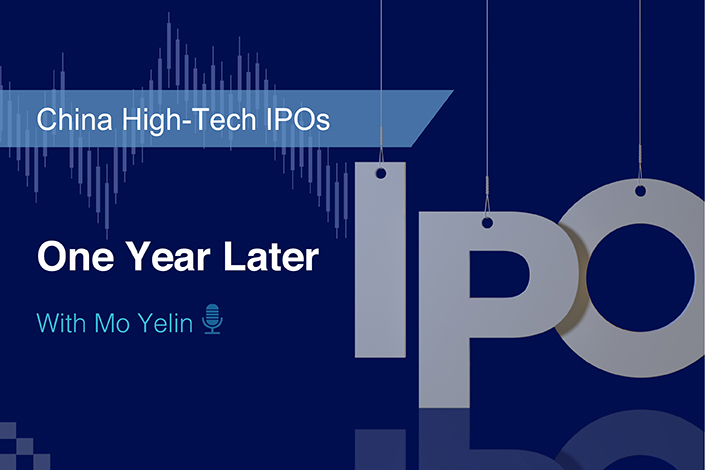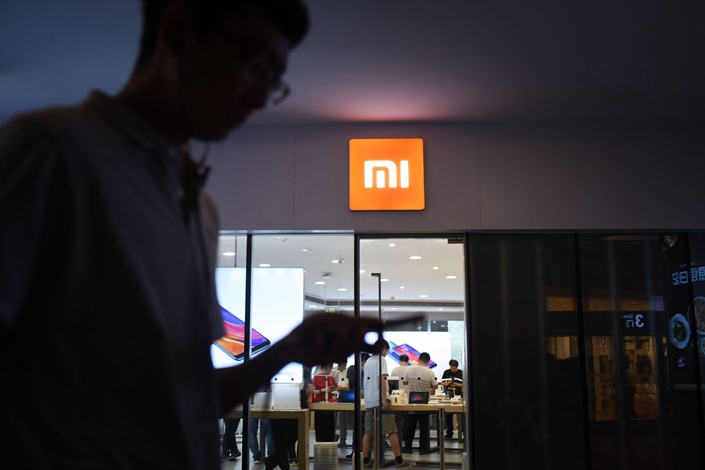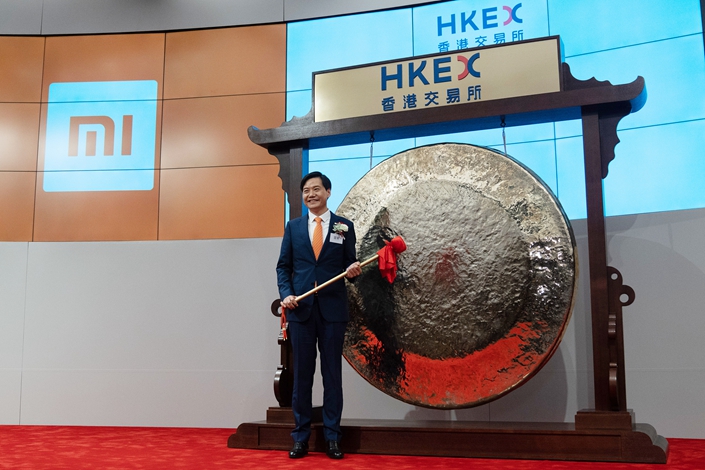In Depth: A Year After It Went Public, Investors Aren’t Buying the Xiaomi Story

Xiaomi Corp. was a big disappointment when investors valued it at just $54 billion following its first trading day in Hong Kong last July — far below the $100 billion some had expected for the world’s No. 4 smartphone-maker.
Now, more than one year later, that disappointment has only deepened as Xiaomi’s stock struggles with no sign of a turnaround.
The company’s shares plunged in January when a six-month lockup period ended, wiping out $14 billion in market value. The stock now trades around HK$9 ($1.15), or just over half of its listing price of HK$17, giving Xiaomi a market value of around $30 billion.
The company has been dogged by stiff competition in a global smartphone market that has contracted for the last six quarters following years of breakneck growth. Typical of recent trends, industrywide shipments fell 6.6% in this year’s first quarter, according to industry tracker Canalys.
Xiaomi’s own smartphone shipments fell by a smaller 1.3% to 27.8 million units for the quarter. Among its three key markets of China, India and Indonesia, the company only managed growth in its traditional stronghold of India.
Besieged by Huawei
Xiaomi’s recent woes in China — its largest single market accounting for nearly 40% of its total smartphone sales — owe at least partly to the U.S.-China trade war now in its second year.
The company’s largest domestic rival, Huawei Technologies Co. Ltd., got an unexpected boost in China following the detention last December of its CFO in Canada on an extradition request from the U.S. More recently the U.S. ratcheted up the pressure on Huawei by cutting off the company from its American suppliers as punishment for violating previous U.S. sanctions.
Those moves ignited a wave of nationalism, prompting many Chinese to say they would support the brand in its time of trouble.
Many companies that often give away phones as gifts to employees in raffles during the Lunar New Year showed their patriotic side this year, according to Sun Yanbiao, head of the Mobile No. 1 Research Institute. Some of those eschewed the more traditional preference for Apple’s iPhones, which have also had trouble in China recently, he added.
 |
A Xiaomi store in Beijing on July 9, 2018. Photo: VCG |
“Despite the fact that (Huawei founder) Ren Zhengfei is saying not to sensationalize the company’s ban with nationalism, our surveys found that Huawei has benefitted in China to some extent — it was the more preferred handset brand for annual events,” he told Caixin.
Huawei itself has also become more aggressive at home amid weakness overseas stemming from the U.S. clash, adding to Xiaomi’s China difficulties. Ren acknowledged in May that Huawei’s international smartphone shipments this year would fall by as much as 60%.
A distributor told Caixin that Huawei pulled back “almost all of its overseas shipments” for its Honor 20 model from its lower-end brand and marked them for China instead. Huawei had originally planned to ship 10 million Honor 20s internationally this year, the source added.
The intensified competition at home has shown up in the latest data for Xiaomi, which traditionally relied on online sales and has a far weaker network of brick-and-mortar stores in China than Huawei.
In the second quarter, Huawei took a record 38% share of the China market after shipping 37.3 million smartphones, according to Canalys. That represented a 31% year-on-year gain, contrasting with a 20% drop for Xiaomi, whose share of the market fell to 11.8%.
 |
Lei Jun, chairman and chief executive officer of Xiaomi Corp., poses for photographs before striking a gong during the company's listing ceremony at the Hong Kong Stock Exchange in Hong Kong, China, July 9, 2018. Photo: VCG |
Offline presence
China’s importance to Xiaomi became clear in May when it announced that co-founder and CEO Lei Jun would transition from his role overseeing overseas affairs to concentrate on the China business.
That change was previously expected by mid-2020, but took on added urgency due to the sagging sales at home, according to a source inside the company, speaking on condition of anonymity.
Xiaomi began as an online-only smartphone seller, a strategy designed to control costs and cultivate a high-tech image among young web-savvy users. But that approach limited its growth potential since many people prefer to make such big purchases in brick-and-mortar stores.
In a nod to the importance of real-world retail, Lei helped the international team build an extensive offline presence after it entered India, which has become Xiaomi’s biggest market outside China and is its biggest success story to date. The company has already begun building a traditional retail network in China, and is hoping to ultimately re-import the successful experience in India back to its home market, said the source.
At the end of last year, Xiaomi had 586 direct-sale stores and 1,378 franchised ones across China, according to the company’s financial report. Yet that network lags behind domestic rivals Huawei, Oppo and Vivo, said Chen Hang, electronics industry analyst for Southwest Securities.
In 2016, Huawei said it had 35,000 brick-and-mortar stores, including 11,000 in China.
As sales remained sluggish, Xiaomi announced in January it would spin off its low-cost Redmi brand as part of an effort to shed the company’s image as a low-end smartphone maker. A month later it made a push to go upscale with the launch of the Mi 9, the company’s most expensive flagship phone to date with a starting price of 2,999 yuan ($441).
Hardware maker
The poor stock performance in its first year may signify that investors aren’t buying into Lei’s vision of Xiaomi as an “internet company,” and still consider it more of a hardware-maker, observers said.
Lei hopes a massive pool of Xiaomi smartphone users will ultimately sign up for services offered by the company, from gaming to e-commerce and mobile payments, similar to global giant Apple. Xiaomi’s current stable of such offerings includes an e-commerce app called Youpin, and a payment product called Mi Pay in India.
However, Xiaomi is currently trading at a price-to-earnings ratio of only eight, which is on par with many traditional electronics-makers. Multiple institutional investors told Caixin they still consider Xiaomi a hardware company.
Of Xiaomi’s 43.8 billion yuan in revenue for this year’s first quarter, about 70% came from smartphones while only 9% came from internet services. Much of the remainder came from other hardware, such as smart TVs and air purifiers.
Those products complement its core smartphone business, and could help to pique investor interest as that core business slows, analysts said. Revenue from such products — made either by Xiaomi or in cooperation with partners — rose 56.5% to 12 billion yuan in the first quarter.
Jason Tan contributed to the story
Contact reporter Mo Yelin (yelinmo@caixin.com)

- MOST POPULAR







